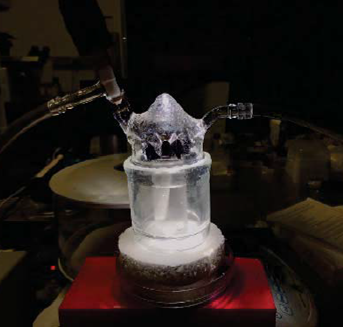Problem
Current methods for water decontamination and desalination of ocean water to provide clean drinking water are time consuming and expensive. The materials that have previously been reported for these functions are difficult and expensive to synthesize. Additionally, these materials usually have drastic limitations such as being mechanically fragile, preventing their commercial viability.
Technology
Researchers at the University of Texas have developed a low-cost, easily manufacturable photothermal composite that is assisted by solar energy gained from sunlight to efficiently decontaminate and desalinate water. These composites have an easy synthesis pathway, use inexpensive materials, and are mechanically resilient. This invention enables a scalable method for the widespread adoption of water decontamination and desalination.
This desalination/decontamination technology consists of a polypyrrole based composite that is able to convert absorbed sunlight into heat and vaporize surrounding water, leaving any contaminates or solutes behind. The high flexibility of the polypyrrole allows for structuring, not allowed with other materials, that greatly enhances the evaporation area of the composite. Thus, this structured composite has much higher evaporation rates over the raw unstructured materials. An innovative water collection system is also encompassed in this invention that decreases the boiling point of water by altering the pressure of the system, improving water collection rates by at least 50%.
An example of this composite system in conjunction with the aforementioned vapor collection system is shown in Figure 1. This system can be easily scaled up to provide a low-cost, easy to manufacture water desalination/decontamination outfit.

Fig. 1

